Construction project managers face mounting pressure from compressed timelines and supply chain uncertainties. Window treatment procurement often becomes a critical path bottleneck that can delay entire project completions and impact client satisfaction.
Effective lead time management for window blinds requires strategic ordering 8-12 weeks before installation, utilizing suppliers with scalable production capabilities and dedicated project scheduling. Professional suppliers can prioritize orders over 500㎡ with batch-specific production aligned to construction phases, reducing delays through proactive timeline coordination.
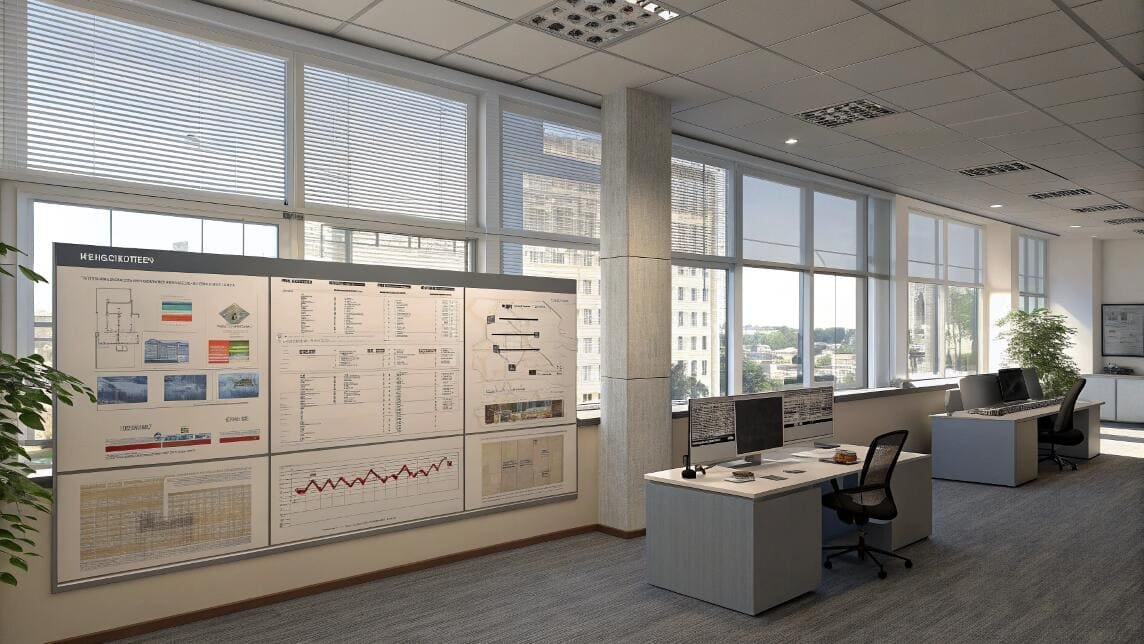
The window treatment industry has evolved beyond simple product supply toward comprehensive project partnership. Understanding modern procurement strategies helps construction professionals avoid costly delays while maintaining quality standards and budget controls.
What options could a manager have to reduce lead time?
Traditional window blind procurement follows linear ordering processes that often conflict with dynamic construction schedules. Project managers need flexible strategies that adapt to changing timelines while maintaining delivery reliability.
Managers can reduce lead times through early supplier engagement, standardized product specifications, bulk ordering strategies[^1], and partnering with suppliers who offer dedicated project scheduling and scalable production capacity. Utilizing free samples for early approval and maintaining buffer inventory for standard sizes provides additional timeline flexibility.
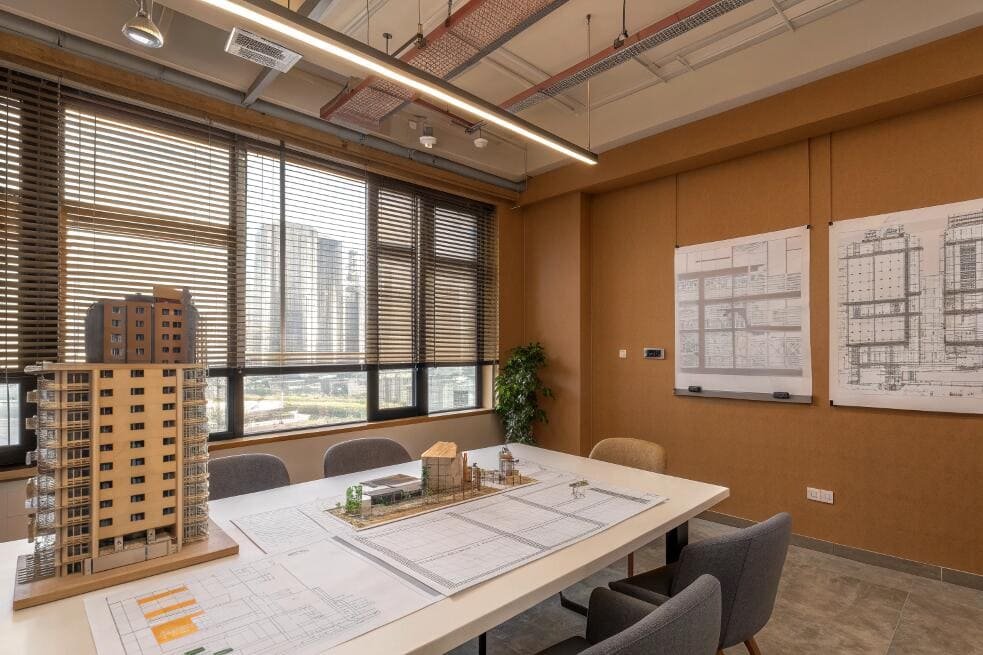
Early supplier engagement[^2] represents the most effective lead time reduction strategy. Involving window treatment suppliers during design development phases allows concurrent specification development while construction progresses. This parallel processing eliminates sequential delays that typically occur when blinds are specified after construction completion .
Standardized specifications across projects create production efficiencies that reduce individual order lead times. Developing preferred product catalogs with pre-approved fabrics, colors, and hardware configurations enables faster ordering and production scheduling. Suppliers can maintain ready inventory for standard specifications while customizing only unique elements.
Bulk ordering strategies leverage economies of scale to achieve priority production scheduling. Orders exceeding 500 square meters often qualify for dedicated production runs and expedited scheduling. Combining multiple projects or phases into single large orders can significantly reduce per-unit lead times while achieving cost advantages.
Strategic supplier partnerships provide access to production capacity and scheduling flexibility unavailable through transactional relationships. Suppliers with scalable production capabilities can adjust capacity allocation based on project urgency and timeline requirements. Long-term partnerships often include priority scheduling agreements that guarantee shorter lead times for established clients.
Sample approval processes can be accelerated through comprehensive sample libraries and digital visualization tools. Free fabric samples allow early material approval before final specifications are complete. Digital samples and 3D renderings can expedite approval processes for standard products while physical samples focus on custom or critical applications.
How to manage long lead times?
Extended lead times are increasingly common due to supply chain complexities and customization requirements. Effective management requires proactive planning and contingency strategies[^3] that maintain project momentum despite extended procurement cycles.
Long lead time management requires detailed project scheduling integration, multiple supplier relationships, inventory staging strategies, and clear communication protocols with all stakeholders. Breaking large orders into delivery phases and maintaining backup suppliers provides flexibility when primary suppliers face delays.
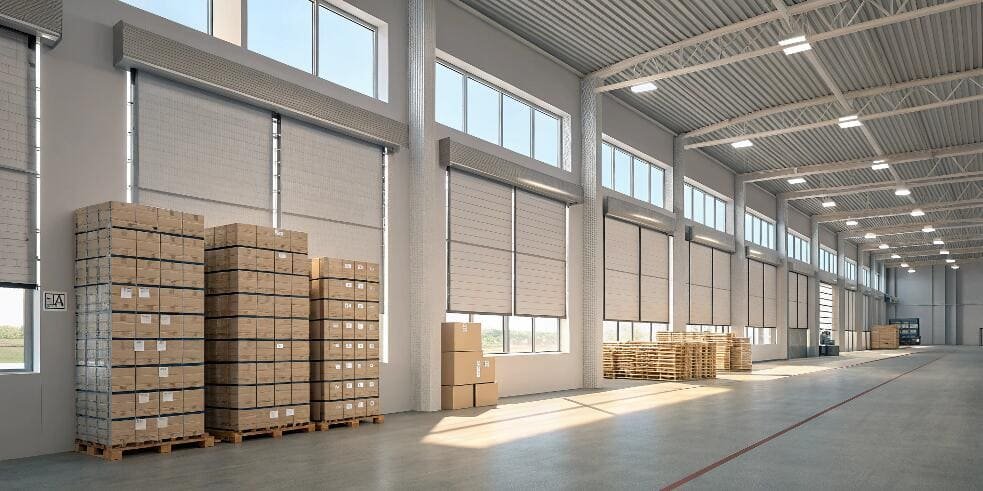
Project scheduling integration ensures window treatment procurement aligns with overall construction timelines. Detailed scheduling identifies critical milestones where blind installation must occur, working backward to establish ordering deadlines. This reverse scheduling approach accounts for production time, shipping, customs clearance, and installation preparation.
Multiple supplier relationships provide contingency options when primary suppliers encounter delays. Maintaining relationships with both domestic and international suppliers creates flexibility in sourcing strategies. Different suppliers may have varying lead times for similar products, allowing project managers to optimize delivery timing based on specific requirements.
Inventory staging strategies involve ordering components at different times to optimize cash flow and storage requirements while maintaining installation readiness. Hardware and standard components can be ordered early with longer lead times, while custom fabric components are timed closer to installation dates. This phased approach reduces overall project risk while optimizing resource utilization.
Communication protocols ensure all stakeholders understand lead time implications and milestone dependencies. Regular progress updates from suppliers help identify potential delays early, allowing proactive response measures. Clear escalation procedures address issues before they impact project timelines.
Batch production scheduling aligns manufacturing capacity with project phase requirements. Rather than ordering entire projects at once, scheduling deliveries to match construction progress reduces storage requirements while ensuring materials arrive when needed. This approach particularly benefits large commercial projects with extended construction timelines .
What is the lead time for new windows?
Window lead times vary significantly based on product type, customization level, and supplier capabilities. Understanding typical timelines helps project managers establish realistic procurement schedules and identify opportunities for timeline optimization.
Standard window blind lead times range from 2-6 weeks for basic products to 8-12 weeks for custom specifications and motorized systems. International suppliers may require additional 2-4 weeks for shipping and customs clearance, while domestic suppliers can provide faster delivery but may have limited customization capabilities.
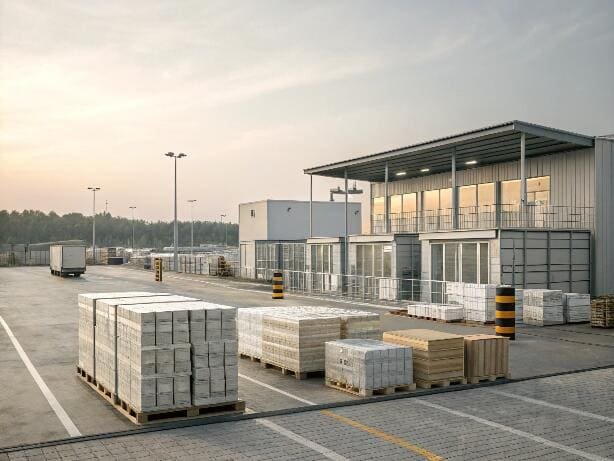
Standard roller blinds and basic cellular shades typically require 2-4 weeks production time for common sizes and colors. These products benefit from standardized manufacturing processes and readily available materials. Suppliers often maintain inventory of popular configurations, enabling even faster delivery for stock items.
Custom specifications extend lead times to 6-8 weeks due to individual manufacturing requirements. Custom sizes, special fabrics, or unique hardware configurations require dedicated production scheduling. The complexity of customization directly impacts lead time, with simple modifications adding minimal time while complex custom solutions may require 10+ weeks.
Motorized systems add 2-4 weeks to standard lead times due to electronic component integration and testing requirements. Smart home integration and programming requirements can extend this further. However, suppliers with dedicated motorization capabilities may achieve shorter lead times through specialized production processes.
International shipping adds significant time to lead times, particularly from Asian manufacturers. Ocean freight typically requires 3-4 weeks transit time plus customs clearance processes. Air freight can reduce shipping time to 1-2 weeks but significantly increases costs. Domestic suppliers eliminate international shipping time but may have higher base costs.
Seasonal demand patterns affect lead times substantially. Peak construction seasons often extend lead times due to capacity constraints, while off-peak periods may enable faster delivery. Planning orders to avoid peak demand periods can significantly reduce lead times and potentially achieve cost advantages.
How to estimate construction timeline?
Accurate timeline estimation requires understanding the interdependencies between construction phases and window treatment installation requirements. Proper estimation prevents delays while optimizing resource utilization and cash flow.
Construction timeline estimation for window blinds[^4] should account for building completion status, final cleaning requirements, concurrent trade activities, and seasonal installation considerations. Installation typically occurs during final finish phases, requiring coordination with painters, cleaners, and other finishing trades.
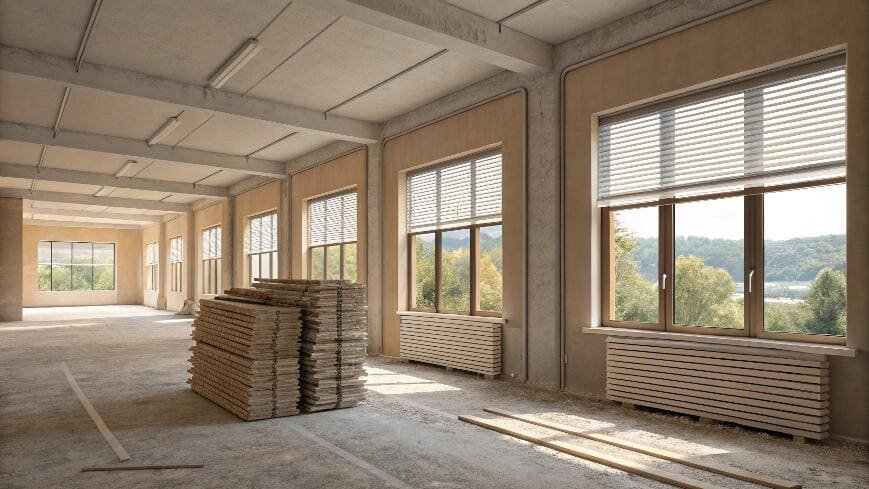
Building completion requirements determine when window blind installation can begin. Interior construction must reach substantial completion with functional HVAC systems, completed flooring, and finished wall surfaces. Attempting installation before these milestones risks damage to blinds and may require reinstallation.
Final cleaning coordination affects installation timing significantly. Blinds should be installed after major construction cleaning but before final detailing. This sequence prevents construction dust accumulation while avoiding damage during intensive cleaning procedures. Clear coordination with cleaning contractors ensures optimal installation timing.
Concurrent trade activities require careful scheduling to avoid conflicts and damage. Painting work must be completed before blind installation to prevent overspray damage. Electrical work for motorized systems[^5] needs completion and testing before blind installation begins. HVAC balancing should occur before installation to ensure proper air flow patterns around window treatments.
Seasonal considerations affect both material performance and installation efficiency. Extreme temperatures can affect adhesive performance and material flexibility. Weather conditions impact transportation and storage requirements. Planning installation during moderate weather conditions optimizes performance and reduces weather-related delays.
Quality control inspections and punch list items should be scheduled after blind installation completion. Allowing time for inspection and correction of any issues prevents delays in project closeout. Building commissioning procedures may include window treatment operation testing, requiring coordination with building automation systems.
What factors affect window treatment lead times?
Multiple variables influence window treatment procurement timelines, from basic product complexity to global supply chain factors. Understanding these variables helps project managers make informed decisions and develop realistic schedules.
Key factors affecting lead times include product complexity and customization level, supplier production capacity and location, material availability and seasonal demand, shipping methods and customs requirements, plus installation complexity and site readiness. Each factor can significantly impact overall procurement timelines.
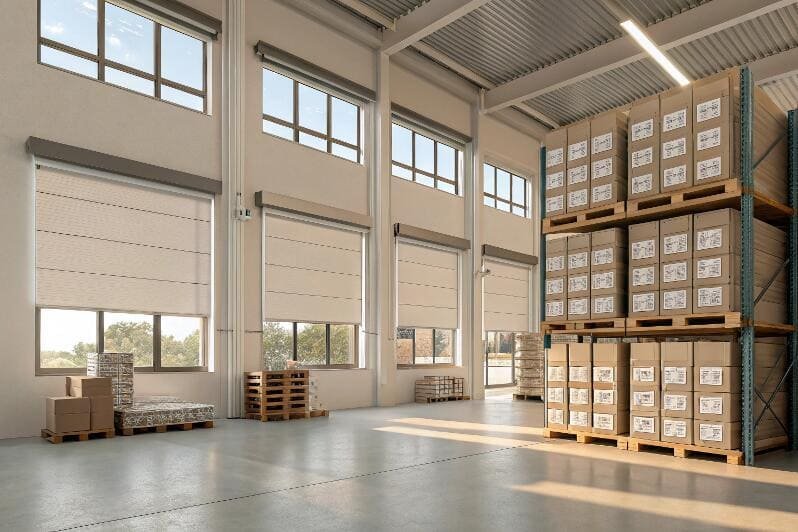
Product complexity directly correlates with production time requirements. Basic roller blinds with standard fabrics require minimal production time, while custom Roman shades with specialized fabrics need extended manufacturing periods. Motorized systems add complexity through electronic integration and testing requirements that extend production schedules.
Supplier production capacity affects scheduling flexibility and delivery commitments. Large suppliers with scalable capacity can accommodate urgent orders and provide priority scheduling, while smaller suppliers may have limited flexibility during peak demand periods. Geographic location impacts both production costs and shipping times, with international suppliers often providing cost advantages at the expense of extended lead times.
Material availability fluctuates based on seasonal demand patterns and supply chain disruptions. Popular fabrics may experience temporary shortages during peak construction seasons, while specialized materials may require extended procurement times. Suppliers with diverse material sourcing and inventory management typically provide more reliable delivery commitments.
Shipping and logistics factors significantly impact international procurement. Ocean freight provides cost advantages but requires 3-4 weeks transit time, while air freight reduces shipping time to days but increases costs substantially. Customs clearance procedures add variability to international shipments, particularly for first-time importers or complex product classifications.
Installation requirements affect project scheduling beyond simple delivery timelines. Complex installations requiring specialized labor or coordination with building systems need additional scheduling time. Site readiness factors including access, storage, and concurrent construction activities impact installation efficiency and may extend overall project timelines.
How to plan blinds orders to meet construction deadlines?
Strategic order planning integrates window treatment procurement with overall project management to ensure timely delivery without compromising quality or budget objectives. Effective planning requires understanding critical path dependencies and maintaining flexibility for schedule adjustments.
Effective blinds order planning requires establishing clear milestone schedules, implementing phased ordering strategies, maintaining supplier communication protocols, and building contingency buffers into timelines. Orders should be placed 8-12 weeks before required installation dates with regular progress monitoring and backup supplier options.
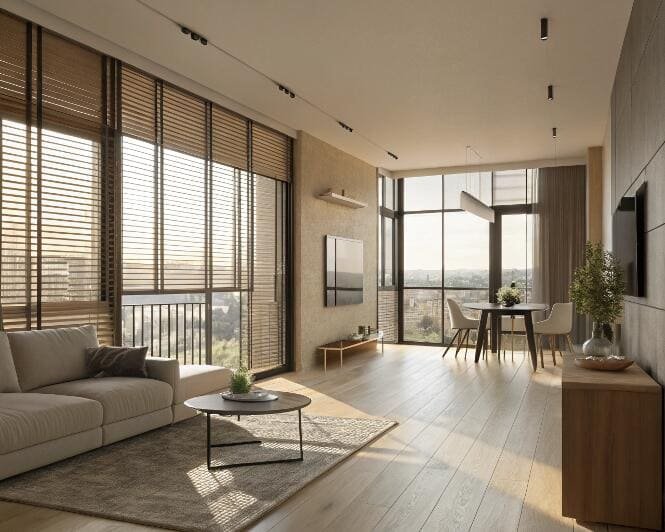
Milestone-based scheduling links blind ordering to specific construction completion markers rather than calendar dates. This approach accommodates construction schedule variations while ensuring blind delivery aligns with actual project progress. Key milestones include window installation completion, interior finishing substantial completion, and final cleaning scheduling .
Phased ordering strategies break large projects into manageable segments that align with construction phases. Early phases can proceed with standard specifications while later phases accommodate design refinements or change orders. This approach optimizes cash flow while reducing inventory storage requirements and risk exposure to specification changes .
Supplier communication protocols ensure regular progress updates and early identification of potential delays. Weekly status updates during production phases help identify issues before they impact delivery schedules. Clear escalation procedures address problems promptly while maintaining project momentum.
Contingency planning includes backup suppliers and alternative product specifications that can meet project requirements if primary suppliers encounter delays. Maintaining relationships with multiple suppliers provides flexibility when unexpected issues arise. Alternative specifications should be pre-approved to enable rapid substitution without design review delays.
Quality control scheduling includes sample approval, production monitoring, and pre-delivery inspection processes. Early sample approval prevents delays due to specification issues, while production monitoring identifies potential quality problems before completion. Pre-delivery inspection ensures products meet specifications before shipping to project sites .
When should contractors order window blinds for new builds?
Timing window blind orders for new construction requires balancing early procurement benefits with specification flexibility and cash flow optimization. Optimal timing varies based on project type, customization requirements, and supplier capabilities.
Contractors should order window blinds 8-12 weeks before planned installation for standard products, extending to 14-16 weeks for complex custom specifications or motorized systems. Orders placed during early construction phases may require specification flexibility, while later orders provide certainty but risk schedule delays if suppliers face capacity constraints.
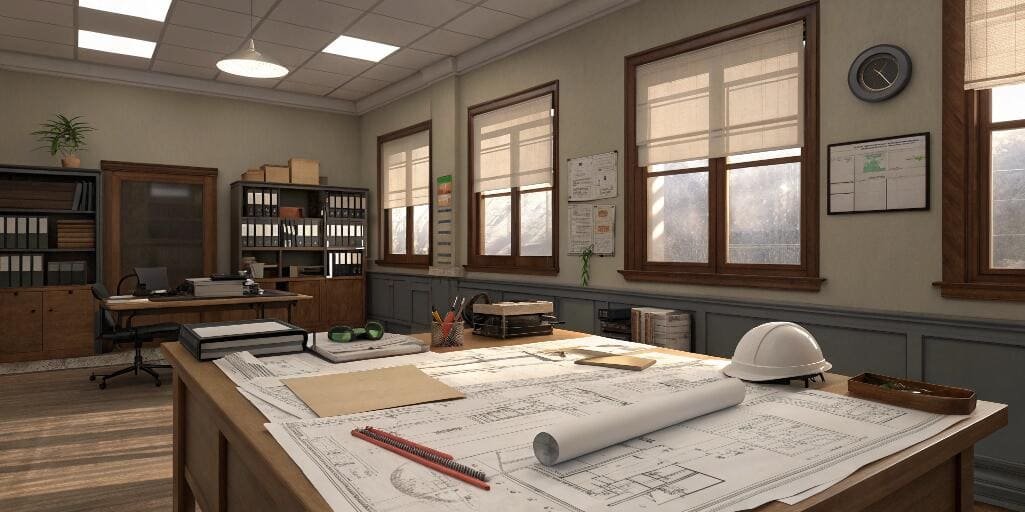
Standard product ordering can occur relatively late in construction schedules due to shorter production requirements. Basic roller blinds and cellular shades with common specifications typically require 4-8 weeks total lead time including production and delivery. This timing allows for specification finalization during construction while maintaining delivery reliability.
Custom specification projects require earlier ordering to accommodate extended production timelines. Unique sizes, special fabrics, or complex hardware configurations may need 10-14 weeks production time. Early ordering provides certainty but may require specification flexibility if design changes occur during construction.
Motorized systems demand the earliest ordering due to electronic component complexity and integration testing requirements. Smart home integration and building automation connectivity require additional coordination time that extends overall procurement schedules. These systems benefit from early supplier engagement during design phases.
Specification flexibility becomes crucial for orders placed during early construction phases. Using allowance-based specifications with final selection occurring closer to installation provides flexibility while maintaining budget control. Suppliers offering specification modification capabilities reduce risk for early orders.
Cash flow optimization balances early ordering benefits with payment timing requirements. Some suppliers offer flexible payment terms that align with construction milestone completions, reducing carrying costs for early orders. Understanding supplier payment requirements helps optimize order timing for financial efficiency.
How to avoid window treatment delays in commercial projects?
Commercial projects face unique challenges including complex approval processes, large scale coordination requirements, and institutional quality standards. Avoiding delays requires proactive management and specialized supplier relationships.
Commercial project delay prevention requires early supplier partnership, detailed specification development, phased delivery planning, and dedicated project management resources. Suppliers with commercial project experience and scalable production capacity provide the reliability needed for successful large-scale implementations.

Early supplier partnership involves window treatment suppliers in design development phases to ensure specifications align with production capabilities and timeline requirements. Commercial-grade products often require different specifications than residential applications, and early involvement prevents specification issues that could cause delays.
Detailed specification development eliminates ambiguity that can cause production delays or quality issues. Commercial projects benefit from comprehensive specification documents that include performance requirements, installation standards, and quality control procedures. Clear specifications reduce change orders and production modifications that extend lead times.
Phased delivery planning coordinates blind delivery with construction progress to optimize storage and installation efficiency. Large commercial projects benefit from delivery scheduling that matches construction zone completion rather than single delivery dates. This approach reduces on-site storage requirements while ensuring materials availability when needed.
Dedicated project management resources ensure consistent communication and proactive issue resolution throughout the procurement process. Commercial projects require specialized expertise in institutional requirements, code compliance, and large-scale logistics coordination. Suppliers with dedicated commercial project teams provide the expertise needed for successful implementations .
Quality control processes for commercial applications often exceed residential standards and require additional time and documentation. Understanding institutional quality requirements early in the specification process prevents delays due to inadequate quality control procedures or documentation requirements.
Extended FAQ Section
How can bulk ordering reduce window blind lead times?
Bulk ordering strategies provide suppliers with production efficiency opportunities that can significantly reduce individual project lead times while achieving cost advantages through economies of scale.
Bulk orders exceeding 500 square meters often qualify for dedicated production scheduling and priority handling that can reduce lead times by 2-4 weeks compared to smaller orders. Suppliers can optimize production runs and material procurement for large orders, creating efficiency gains that benefit project timelines.
Large order volumes justify dedicated production runs that eliminate setup time between different projects . Suppliers can optimize material procurement and labor scheduling for bulk orders, reducing the time required for material sourcing and production planning. These efficiencies translate directly into shorter lead times for qualifying projects.
Priority scheduling provides bulk orders with preferred production slots that may not be available for smaller orders. During peak demand periods, bulk orders can maintain shorter lead times while smaller orders face extended delays due to capacity constraints. This priority access becomes particularly valuable during busy construction seasons.
Combined shipping arrangements for bulk orders create logistics efficiencies that can reduce delivery times while lowering per-unit shipping costs. Container load optimization and dedicated shipping arrangements provide more reliable delivery schedules compared to consolidated shipments that may face delays due to other customers' scheduling issues .
What happens if window blinds arrive late to a construction site?
Late blind delivery can cascade through project completion schedules, impacting final inspections, occupancy permits, and client handover timelines while potentially incurring significant cost penalties and relationship damage.
Late window blind delivery typically delays project completion by 1-3 weeks depending on installation complexity and concurrent activities. This can trigger liquidated damages clauses, extend temporary housing costs for displaced occupants, delay lease commencement dates, and impact contractor reputation with clients and future project opportunities.
Construction project delays create financial consequences that extend beyond immediate rescheduling costs. Liquidated damages clauses in construction contracts often impose daily penalties for late completion, with costs ranging from $500-5000 per day depending on project value and complexity. These penalties can quickly exceed blind procurement costs if delays extend beyond a few days.
Occupancy impacts affect end users significantly in residential and commercial applications. Delayed move-in dates for residential projects may require extended temporary housing arrangements with associated costs and inconvenience. Commercial projects face delayed lease commencement that impacts tenant revenue generation and may trigger penalty clauses in lease agreements.
Labor scheduling disruptions compound delay impacts through idle crew costs and rescheduling challenges. Installation crews may require rescheduling with associated costs, while other trades waiting for project completion may incur standby charges. These indirect costs often exceed the direct costs of expedited blind delivery or alternative sourcing.
Reputation damage from project delays can impact future business opportunities and client relationships. Construction professionals depend on reliable project delivery for referrals and repeat business. Late completions due to window treatment delays can damage professional relationships that take years to rebuild.
How can contractors build buffer time into blind ordering schedules?
Buffer time management balances cost optimization with schedule reliability by incorporating appropriate safety margins without unnecessarily extending project timelines or increasing carrying costs.
Effective buffer time strategies include ordering blinds 2-4 weeks earlier than minimum lead times require, maintaining backup supplier relationships, specifying alternative products for critical applications, and building flexibility into installation scheduling. Buffer time should represent 15-25% of total lead time for standard products and 25-35% for custom specifications.
Statistical analysis of supplier performance helps determine appropriate buffer levels based on historical delivery reliability. Suppliers with 95% on-time delivery may require minimal buffers, while suppliers with lower reliability ratings need larger safety margins. Tracking supplier performance over multiple projects provides data for informed buffer decisions.
Flexible specification strategies allow rapid substitution if primary products face delays. Pre-approved alternative products with similar performance characteristics enable quick switching without design review delays. Maintaining specifications that multiple suppliers can fulfill provides additional flexibility when delays occur.
Staging strategies involve ordering long-lead items early while delaying short-lead components to optimize cash flow and storage requirements. Standard hardware and motors can be ordered with extended buffers while custom fabrics are ordered closer to installation dates. This approach reduces financial carrying costs while maintaining schedule protection.
Communication protocols ensure early identification of potential delays that allow proactive response measures. Supplier progress reporting should occur weekly during production phases with immediate escalation for any schedule concerns. Early warning systems enable alternative sourcing or schedule adjustments before delays impact project completion.
What are the costs of expedited window blind delivery?
Expedited delivery options provide timeline recovery opportunities but involve significant cost premiums and potential quality compromises that require careful evaluation against delay costs and project priorities.
Expedited blind delivery typically costs 25-100% premium above standard pricing depending on urgency level and customization requirements. Air freight shipping adds $50-200 per window compared to standard ground transportation, while expedited production may require dedicated manufacturing runs with associated premium charges ranging from 15-50% above standard production costs.
Rush production charges reflect the additional costs suppliers incur to prioritize orders and adjust production schedules. These charges may include overtime labor costs, expedited material procurement, and disruption costs for rescheduling other orders. Premium levels vary by supplier capability and existing production schedules.
Express shipping costs vary significantly based on distance, shipment size, and urgency requirements. Domestic air freight typically adds $100-300 per pallet compared to standard ground shipping, while international express delivery can cost 3-5 times standard shipping rates. Weight and dimensional factors significantly impact express shipping costs.
Quality considerations may be compromised under expedited timelines due to reduced quality control time and potential production shortcuts. Rush orders may receive less thorough inspection or testing, potentially increasing defect rates. Understanding these trade-offs helps evaluate whether expedited delivery provides net project benefits.
Cost-benefit analysis should compare expedited delivery premiums against project delay costs including liquidated damages, extended temporary costs, and lost opportunity costs. In many cases, expedited delivery premiums are substantially lower than delay costs, making expedited options financially advantageous despite high premium rates.
Conclusion
Strategic lead time management for window blinds requires proactive planning, supplier partnerships, and flexible procurement strategies. Early ordering with appropriate buffers, clear communication protocols, and backup contingency plans ensure project completion without compromising quality or budget objectives in construction environments.
Master Your Project Timeline with Expert Blind Procurement
Stop letting window treatment delays derail your construction schedules. Our comprehensive project management approach ensures on-time delivery through strategic planning, dedicated production scheduling, and proactive communication protocols tailored to construction industry requirements.
Get detailed project timelines, supplier capability assessments, and procurement strategies designed specifically for construction professionals. Our team provides milestone-based scheduling, buffer time calculations, and contingency planning that keeps your projects on track from ground-breaking to final occupancy.
Partner with construction window treatment experts today:
info@velablinds.com
Deliver your projects on time, every time, with professional blind procurement management.
---
[^1]: Explore how bulk ordering can lead to cost savings and faster production schedules.
[^2]: Discover the advantages of involving suppliers early in the project for better outcomes.
[^3]: Learn about strategies to mitigate risks and ensure timely delivery.
[^4]: Discover various window blind options that can meet your project needs and aesthetic preferences.
[^5]: Find out how motorized systems can enhance functionality and their associated lead times.Partner with VelaBlinds for Your Next Project
Smart window treatments shouldn't be complicated. After working with 500+ distributors and contractors worldwide, I've streamlined the process to get you quality products, competitive pricing, and reliable support - every time.
Why project professionals choose VelaBlinds:
- ✅ Fast, Accurate Quotes - Detailed specs and pricing within 24 hours
- ✅ Transparent Pricing - No hidden fees, volume discounts clearly outlined
- ✅ Quality Assurance - Direct partnerships with certified OEM manufacturers
- ✅ Project Support - Dedicated account manager from quote to delivery
Start your next project:
📧 Quick Quote: Send your requirements to info@velablinds.com
📱 Direct Contact: WhatsApp +86 137 2012 8317
🌐 Browse Solutions: https://velablinds.com/
📁 Product Resources: Access spec sheets, catalogs & project files
Jimmy Chen, Founder
"I built VelaBlinds to solve the real challenges I faced as a project buyer - long lead times, unclear specs, and unreliable suppliers. Let's discuss how we can power your projects with smarter blinds."
Serving distributors and contractors across North America, Europe, and Australia since 2018.



